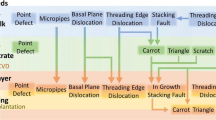Abstract
The European Space Agency (ESA) in collaboration with its industrial partners has been updating their standards for Printed Circuit Board (PCB) design, qualification and procurement. These standards include design margin to mitigate the risks of latent short-circuit and open-circuit failures, as well as new test and inspection methods for qualification and for lot conformance, such as temperature humidity bias test, conductive anodic filament test, interconnect stress test and dark-field microscopy. The test methods are used to benchmark technology from ESA-qualified PCB manufacturers, and to qualify high-density interconnect (HDI) technology including microvias. To investigate the reliability of the advanced manufacturing methods, various traditional and accelerated thermal stress tests are performed on two and three layers of staggered and stacked microvia configurations, as well as the thermo-mechanical modelling of stress factors. This paper describes the motivation for the updated standards, the benchmarking of novel test methods and first reliability data on advanced HDI technology.










Similar content being viewed by others
Availability of data and material
Public.
Code availability
N/a.
References
IPC-WP-023, IPC Technology Solutions White Paper on Performance-Based Printed Board OEM Acceptance: Via Chain Continuity Reflow Test: The Hidden Reliability Threat—Weak Microvia Interface, May 2018
ECSS-Q-ST-70-12C, Space product assurance—Design rules for printed circuit boards, 2014
Latent short circuit failure in high-rel PCBs caused by lack of cleanliness of PCB processes and base materials, S Heltzel, The PCB Magazine, I-Connect007, August 2015. http://www.iconnect007.uberflip.com/i/551288-pcb-aug2015/40. Accessed 18 Nov 2021
EA-2010-MAT-12-B, ESA Alert on cracks in polyimide PCBs, 2011. https://www.alerts.esa.int/. Accessed 18 Nov 2021
MIL-STD-275E, Military standard—printed wiring for electronic equipment, 1984
http://ww.escies.org/pcb/. Accessed 18 Nov 2021
https://ipcvalidation.org/. Accessed 18 Nov 2021
ECSS-Q-ST-70-60C, Space product assurance—Qualification and procurement of printed circuit boards, 1 March 2019
IPC-4101E Specification for Base Materials for Rigid and Multilayer Printed Boards, March 2017
ESA-TECMSP-MX-016451, Conformance between ECSS-Q-ST-70-60 and IPC-6012DS, 2020. http://www.escies.org/pcb/. Accessed 18 Nov 2021
Mc Brien, C.M., Heltzel, S.: Insulation resistance of dielectric materials under environmental testing. In: IPC APEX EXPO Conference Proceedings, San Diego, US, January 2013 (2013)
IPC-TM-650 method 2.6.25B, Conductive Anodic Filament (CAF) Resistance Test: X-Y Axis (2016)
IPC-9691B, User Guide for the IPC-TM-650, Method 2.6.25, Conductive Anodic Filament (CAF) Resistance Test (Electrochemical Migration Testing), June 2016
IPC-TR-476A, Electrochemical Migration: Electrically Induced Failures in Printed Wiring Assemblies, May 1997
IPC-9201A, Surface lnsulation Resistance Handbook, August 2007
Hunt, C., et al.: Moisture measurements in PCBs and impact of design on desorption behaviour. IPC APEX EXPO Conference Proceedings, San Diego, US, January 2011
GSTP-6 Element 1 Compendium of Potential Activities for Advanced Manufacturing, 2015 and 2019. http://www.emits.sso.esa.int/emits-doc/ESTEC/News/GSTP6E1-AdvancedManufacturing-Compendium-Rev2.pdf. Accessed 18 Nov 2021. http://www.emits.sso.esa.int/emits-doc/ESTEC/News/GSTPAMCompedium2019.pdf. Accessed 18 Nov 2021
Cauwe, M. et al.: High-density PCB technology assessment for space applications. In: IPC APEX EXPO Conference Proceedings, San Diego, US, February 2020
ESA-TECMSP-TN-019672, Microvia process guidelines, 2020, http://www.escies.org/pcb/. Accessed 18 Nov 2021
Cauwe, M. et al.: Microvia technology assessment for space applications. In: Electronics in Harsh Environments Conference, not yet published at the time of submitting this paper
Acknowledgements
The updated standards, test methods, test result, alignment of technology needs and process guidelines are the outcome of the close collaboration among space agencies, satellite integrators, equipment manufacturers, PCB manufacturers and their supply chain for base materials and process chemistry, through the various working groups of ECSS and PCB/SMT of the Components Technology Board. In addition, cooperating with the IPC V-TSL-MVIA Subcommittee provides an in-depth support from this world-wide expert community and the opportunity to include several additional test methods.
Funding
Partly by GSTP 4000122931/18/NL/LvH, activity G61A-017QT from Advanced Manufacturing Compendium 2015. Partly by TDE 4000116320/15/NL/SW, task request HWL-2019-0001.
Author information
Authors and Affiliations
Corresponding author
Ethics declarations
Conflict of interest
None.
Additional declarations for articles in life science journals that report the results of studies involving humans and/or animals
N/a.
Ethics approval
N/a.
Consent to participate
Yes.
Consent for publication
Yes.
Additional information
Publisher's Note
Springer Nature remains neutral with regard to jurisdictional claims in published maps and institutional affiliations.
Rights and permissions
About this article
Cite this article
Heltzel, S., Cauwe, M., Bennett, J. et al. Advanced PCB technologies for space and their assessment using up-to-date standards. CEAS Space J 15, 89–100 (2023). https://doi.org/10.1007/s12567-021-00404-1
Received:
Revised:
Accepted:
Published:
Issue Date:
DOI: https://doi.org/10.1007/s12567-021-00404-1




